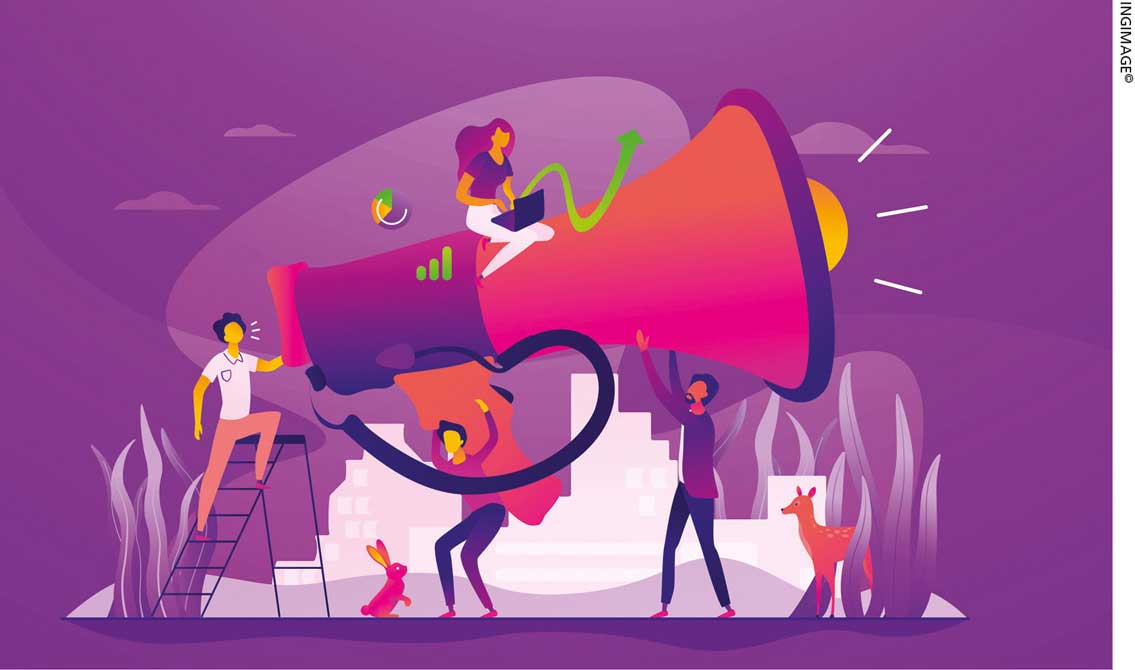CRM PRIORITIES
THE CUSTOMER IS KING!
The client relationship management process is vital – Dr. Muneer Muhamed

Businesses should remember that customers always come first. Most B2B firms use a CRM system even if customer relationship management isn’t technology based.
Surprisingly, the customer was not always a driving force in B2B client management or CRM processes. However, CRM today is typically driven by a CIO or chief sales manager using technology and sales automation at the centre.
Nevertheless, that approach misses the key purpose of CRM, which is to foster more enduring relationships with clients to increase profitability for the firm in the long term and referrals for more business from others.
B2B marketers can take a few steps to move the process from what it is to what it should be.
First, let’s examine the main components of the CRM process including enablers and actualisers. Enablers include the front end technology, automation and systems that enable companies to establish one-on-one relationships with clients. They are necessary but not sufficient by themselves for the success of CRM.
Applications providers and consulting firms often treat CRM as a technological issue first, and follow the philosophy of ‘build it and they will come.’ This approach has resulted in well documented failures in CRM implementation.
More than 60 percent of CRM projects fail to give an ROI to enterprises concerned until the SaaS model has mushroomed.
When combined with enablers, actualisers will help bring meaningful change to an organisation. Actualisers include much needed organisational and cultural changes, CRM training, alignment of business strategy with competencies, hiring decisions and deployment practices, and marketing applications. Actualisers stretch beyond the bounds of traditional marketing.
But the marketing function’s responsibility is to ensure that the customer is at the centre of all such designs. Marketers can take the following key steps and put the customers first while developing their B2B CRM programmes.
TECHNOLOGY Make sure that technology is driven by real client needs rather than those that are perceived by employees. Seek information on the client relationship requirements before the company buys expensive CRM software and ensure that the organisation aligns itself with customers’ needs.
Marketers should get answers to the following questions. What are the primary factors to customer satisfaction and loyalty? How well do we perform against the competition on key satisfiers? And what information is needed to enhance performance?
SEGMENTATION For the efficient allocation of marketing resources, one must classify clients by value. Client longevity and profitability are two useful measures to use in segmentation.
Client revenue may be a useful measure of value but only if prices and the cost of service delivery remain similar by size of client. If bigger clients receive larger price discounts than their smaller counterparts or demand higher service levels, the firm may find that its most valuable clients are the smaller ones.
Once tiers are established, marketers can append industry type, employee size and geographical information to client records in order to identify lucrative sub-segments.
COMMUNICATION Turn one-way messages into dialogue. Marketers use direct and indirect messaging with clients. Direct communication includes telemarketing, service support, telephone operators, trade shows, user groups, speaking engagements and face-to-face sales. Indirect communication includes advertising, direct marketing, brochures, PR and websites.
CRM fosters more targeted and knowledgeable direct contact with clients to build stronger relationships. For example, let’s assume that clients are ranked and segmented into four priority tiers based on profitability. Marketers can use that information to allocate communications spending.
The following steps will help…
Identify and prioritise the direct and indirect marketing communications that will strengthen client relationships. These might include client reward systems to encourage longevity, special ‘members only’ website content, e-newsletters, news alerts, thought leadership events and different account management tiers for valued clients.
Assign marketing resources to each client sub-segment depending on its value to the enterprise. A tactical matrix can be developed where the client tiers ranked by value are listed on the left-hand column, and direct and in-direct tactics assigned to each tier are shown across the rows.
MEASUREMENT If the desired results are not achieved, marketers may have to redo competitive performance research, reassess competencies and redeploy talent, and make the necessary adjustments in step three.
Occasionally, it could be because of the suboptimal satisfiers and delighters.
By following these steps, marketers can play a key role in making CRM a success and ensuring that they remain on top by putting customers first in everything they do.




